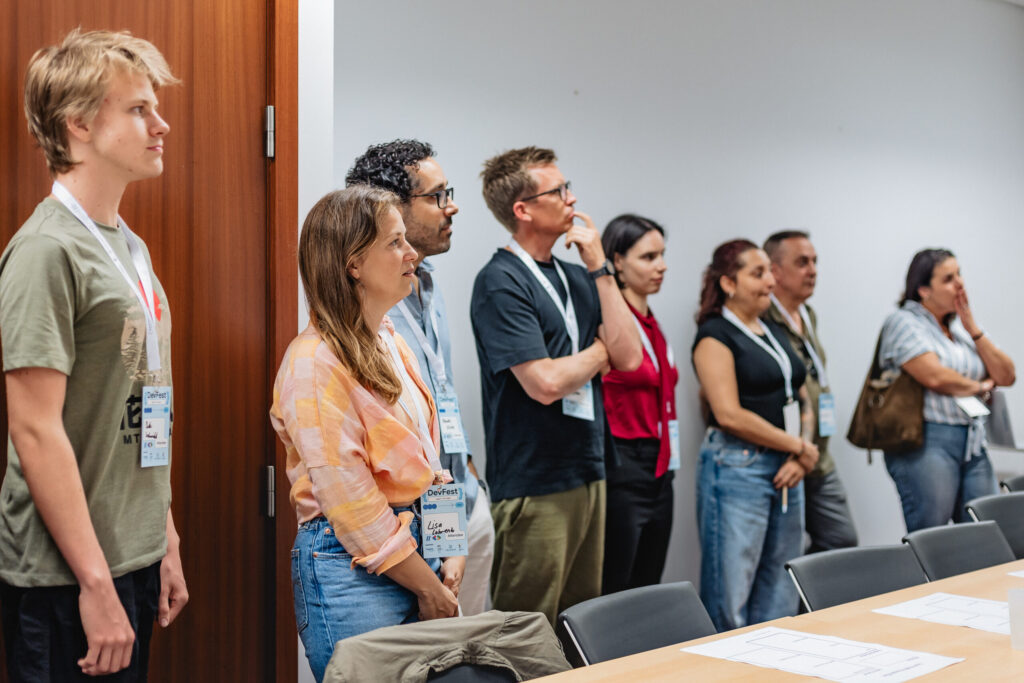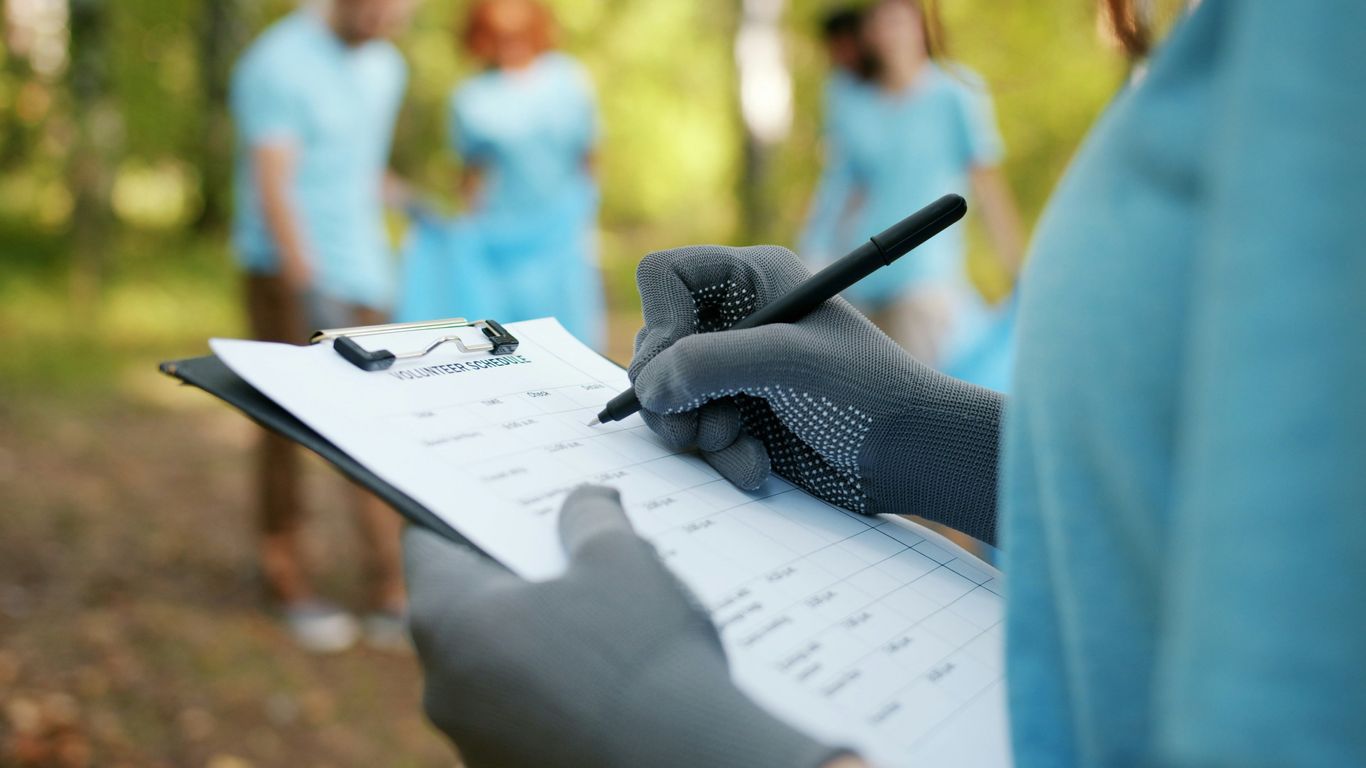
You might be wondering how to make an impact, whether it’s in your own life or in the world around you.
The idea can seem big, but it’s usually the simple things that add up to real change. You don’t need to be a leader or have a lot of resources, just a willingness to start.
From the way you treat people every day to getting involved in your community, there are lots of ways to make a difference that actually stick. Let’s break down some practical steps you can use to create meaningful change, both for yourself and for others.
Key Takeaways
- Taking personal responsibility is the first step toward making a difference.
- Consistent small actions, like kindness, can add up to bigger changes over time.
- Getting involved in your community helps you see real results and build connections.
- Mentoring and sharing what you know can help others grow and succeed.
- Tracking your progress and celebrating wins keeps you motivated to continue making an impact.
Cultivating a mindset so you can make an impact
Embracing personal responsibility for change
Taking ownership is the starting line. When you look around and spot things that aren’t right, it’s easy to wait for someone else to jump in. But acting, even in small moments, is how progress begins. Accepting responsibility means you choose to act, not just react. Stop thinking change is someone else’s job. Notice problems, ask what’s in your control, and take the first step—however unglamorous it feels. When you start carrying ownership in your daily life, people notice, and trust follows.
- Spot what you can actually change in your day-to-day
- Start with one action—even a small one makes a difference
- Notice when you’re blaming others and turn it inward (how could you help instead?)
Choosing to act, instead of waiting, is where progress actually starts, even if you feel unprepared.
Identifying your core values and motivations will help you make an impact
Meaningful action grows out of knowing what drives you. If you’re unsure what matters to you, you’ll end up chasing other people’s approval or giving up. Slow down and ask yourself tough questions: What gets you excited? What would you fight for? Write them down.
Here’s a quick process:
- List five moments when you felt proud or energized
- Pinpoint what core value showed up each time (for example: integrity, fairness, curiosity)
- Pick the top three that never fail to motivate you
When your decisions are based on these values, you find the energy to keep trying even when it’s tough. For more ways to rethink your approach, check out how reframing can help you develop a growth mindset.
Building resilience through self-reflection
Things won’t always work out as planned. Building resilience means learning from setbacks, not getting knocked out by them. Make the time for active self-reflection—ask what went right, what didn’t, and what you’ll do differently next time. Don’t confuse a misstep with failure; it’s part of the process.
Simple ways to get better at bouncing back:
- After a challenge, jot down three things you learned
- Ask for honest feedback from someone you trust
- Try reframing struggles as steps forward, even if they sting
Progress happens when you review, rethink, and return to the work—one step at a time.
The mindsets you build today set the limits on the change you can create tomorrow.
Understanding how to make an impact in your daily life
Making a difference starts in the day-to-day moments. You don’t need to wait for a big opportunity—impact often comes from the regular choices you make. Let’s break that down even further into actions you can take right now.
Practicing kindness and compassion consistently
- Small gestures go a long way. Hold the door open, check in on a neighbor, leave a kind note for a coworker—these acts build a positive atmosphere around you.
- Listening carefully when someone needs to vent can be the difference between someone feeling alone or understood.
- Offer your time or share resources to someone who’s had a rough day.
- If you’re aiming to boost your own habits in this area, you might want to check out practical tips to improve focus and stay motivated to do good, even when life gets hectic.
Sometimes, the kind word or smile you share is the highlight of someone’s week—even if you don’t notice it at all.
Turning small actions into significant change help you make an impact
Don’t underestimate what a few minutes of your time can achieve. Pick one thing and do it often:
- Pick up trash at your local park.
- Drop off a meal for someone who could use extra support.
- Offer to help an elderly neighbor with their groceries.
The table below shows how repeated small efforts add up over a year:
| Action | Once a Week | Yearly Total |
|---|---|---|
| Picking up trash | 1 hour | 52 hours |
| Bringing a meal | 1 delivery | 52 meals |
| Checking on a neighbor | 1 visit | 52 visits |
Creating a ripple effect within your circles
- Acts of kindness inspire others to do the same—this is the ripple effect.
- Invite friends to volunteer, or include your family in charitable activities.
- Celebrate and talk about the good you see. The more visible kindness is, the more likely it spreads.
Even on challenging days, showing up for others encourages a cycle of support and care throughout your community. Everyone’s efforts truly matter, and sometimes the simplest actions plant the seed for lasting change.
Engaging with your local community for greater good, is a sure fire way to make an impact
When you spend your time and energy on your neighborhood, you often see quick results. Getting involved can feel intimidating at first, but you will notice more connections, an improved area, and a stronger sense of purpose.
Volunteering your time and skills strategically
Being strategic with your volunteering means picking causes or groups that truly align with your interests. Not every opportunity is the same, and sometimes, you have to ask around to find the right fit.
- Join clean-up events at a local park to make your streets more welcoming.
- Share your talent by tutoring or offering workshops—helping others goes beyond physical labor.
- Use action to address gaps in your community: you might volunteer at animal shelters, libraries, or food banks, depending on your skills and the needs you see.
Choose projects that excite you, and the effort won’t feel like a chore.
Stepping up to help isn’t about the recognition. It’s about doing work that matters, even if it’s behind the scenes. Your contribution supports others and shapes a better community.
Supporting and leading grassroots initiatives
Grassroots action is powerful. Change happens fast when neighbors with shared interests come together. Whether it’s a letter-writing campaign or rally, your voice adds weight.
Some quick ways to get started:
- Join a neighborhood group or local committee tackling issues important to you.
- Help organize a fundraiser, food drive, or block party.
- Speak up at town meetings, write positive reviews for local shops, or support a neighbor’s small business.
When you back others at the ground level, it inspires more people to show up and pitch in. Sometimes, even a small spark sets off a great movement. If you want more direction in setting and achieving goals for change, tips in building genuine community connections can be really helpful.
Forging strong connections with your community
Strong neighborhoods don’t spring up overnight. Start by showing up—at a committee meeting, a sporting event, or even just by introducing yourself to the person next door.
- Welcome new faces to your block.
- Offer practical help to those nearby, like picking up groceries or yard work.
- Listen closely at gatherings to learn about what matters most to your community.
The more you interact, the deeper your roots in your community become.
Table: Simple Ways to Strengthen Local Bonds
| Action | Frequency | Impact Level |
|---|---|---|
| Attend local events | Monthly | Medium |
| Volunteer | Weekly | High |
| Host gatherings | Seasonally | High |
| Support local shops | Ongoing | Medium |
No need to overthink it—sometimes, a wave and a smile are the first steps toward a network that supports everyone. Showing consistency makes you a known and trusted presence, and organic growth follows from there.
Empowering others through mentorship and education is a way to make an impact
The most lasting difference you can make often happens when you invest in people. By sharing what you know, you help others build skills and confidence that last far beyond one conversation.
Sharing expertise to foster growth
- Help someone learn from your mistakes and wins.
- Offer practical advice on specific challenges—they don’t need theory; they need real examples.
- Listen more than you talk. People grow when they feel heard and understood.
Helping youth access opportunities
- Introduce young people to jobs, internships, or career paths they may not know exist.
- Reach out to local schools, youth buildings, or online platforms to find mentees who need a guide.
- Support school drives or donate tools, books, or time. Sometimes, even showing up changes a life.
Providing guidance and support for long-term success
- Check in regularly—growth takes time, not a single meeting.
- Celebrate their progress, not just big wins. Small gains matter.
- Stay available for tricky moments, offering encouragement when things get tough.
True mentorship is about backing others so strongly that they start believing in themselves, even when you’re not around.
Example: Personal Commitment Pays Off
| Action | Potential Impact |
|---|---|
| Meeting monthly | Higher confidence |
| Proofreading resumes | More job interviews |
| Recommending books | New knowledge |
Real change is built from these simple, steady investments. You can’t always see the end result right away, and that’s okay. Your support is the foundation someone else uses to build their path forward.
Leveraging creative approaches to inspire positive change
Creativity itself is a powerful tool for bringing new ideas to light. When you use your creative side, you open doors that simple words and data sometimes leave closed. This section is about turning ideas into real-world action using creative methods that stick.
Using art and culture to raise awareness
Bold artwork or performances can speak louder than data points—sometimes a song, mural, or short film will get people thinking when speeches won’t. Consider public art displays on local issues, theater shows about community challenges, or music events that spotlight solutions you care about. These creative moves get people curious, engaged, and sometimes even motivated to act.
- Paint a public mural highlighting important social themes.
- Host a small art show featuring pieces on local problems.
- Encourage youth groups to put on plays or spoken word sessions about issues they see.
If you want a message to cut through the noise, creative work can reach people where traditional talk cannot.
Organizing events that engage and mobilize
Events should do more than fill a room—they should spark real movement. Create pop-ups, fairs, or discussions that invite the community in. Make it interactive: hands-on workshops, group challenges, and live art sessions pull people together, letting them see, feel, and act.
- Plan themed community clean-ups with music and food.
- Run a skills-sharing day where neighbors teach talents to each other.
- Develop a storytelling night focused on everyday victories and ideas.
Championing advocacy through storytelling
Stories stick. When you share a real story—one person, one family, one challenge conquered—it personalizes big issues. Whether it’s a quick video, a blog post, or an open mic night, you’re letting voices be heard. Your experience can spark someone else’s courage to act.
- Launch a monthly online narrative series featuring voices from your neighborhood.
- Invite local writers to capture personal stories for a zine.
- Hold an audio story booth at festivals for people to record their hopes and solutions.
Table: Impact of Creative Methods in Community Engagement
| Creative Approach | Audience Reached | Typical Results |
|---|---|---|
| Public Art/Murals | Hundreds to thousands | Raises visibility, sparks conversation |
| Live Events/Workshops | 20-200 | Builds connections, motivates volunteers |
| Storytelling Campaigns | Dozens to thousands online | Changes minds, drives support |
If you want to see real results, step outside the usual—and let creativity lead the way.
Measuring and sustaining your impact over time
You want your actions to stick. Lasting impact isn’t just about a bold move—it’s how you check in on your progress, adjust your path, and celebrate what you accomplish as you go. Building a track record takes honesty and regular checkups.
Setting Clear Goals and Tracking Progress
Pin down what you really want to do. Write it out and break it down into simple steps you can measure. A goal only works if you can say when you’re done, or when you’re getting close. Here’s a quick way to keep yourself on track:
| Goal | Deadline | How Will You Measure It? | Status |
|---|---|---|---|
| Volunteer 5 hrs/mo | 12/31/25 | Hours reported to org | In Progress |
| Mentor one student | 11/1/25 | Meeting notes, feedback from mentee | Complete |
| Start recycling club | 10/15/25 | Number of new members joined | Planning |
- Set a calendar reminder to review your goals.
- Celebrate small wins, not just the finish line.
- Don’t be afraid to adjust when you miss a step.
Adapting Based on Feedback and Outcomes
Change can be tricky. Sometimes things don’t work as planned. Ask for feedback from those you help or work with, honestly. Take their suggestions seriously, and do not get stuck in old ways just because that’s how it started.
- Survey your group or community—ask what’s working, what isn’t.
- Watch for changes in participation or engagement.
- Tweak your approach based on what you learn.
Feedback isn’t a setback—it’s your map for the next right step.
Celebrating Achievements and Lessons Learned
Pat yourself on the back. Recognition motivates you—and your team—to stick with it. Don’t skip the chance to mark milestones, big or small. Take time to look at what worked, and stay honest about what didn’t.
Ways to celebrate:
- Throw a thank-you gathering or write public notes of appreciation.
- Share a summary of achievements with your group—use plain language.
- Reflect on lessons learned and start planning your next move right away.
Sustaining your impact is about staying in motion, noticing your effect, and bringing others along. Keep it simple, keep it real, and your impact will keep growing.
How to Make an Impact, Let’s sum it up
Making a real impact doesn’t have to be complicated or out of reach. You’ve seen that small actions—like helping a neighbor, volunteering, or even just listening—can add up over time. If you want to see change in your life or your community, start with what you have and where you are. It’s easy to get caught up thinking you need to do something huge, but honestly, it’s the steady, everyday choices that matter most. Remember, you don’t have to do it alone. Find others who care about the same things, and work together. Over time, you’ll notice the difference—not just in your community, but in yourself, too. So, take that first step, even if it feels small. You never know how far your actions might reach.



